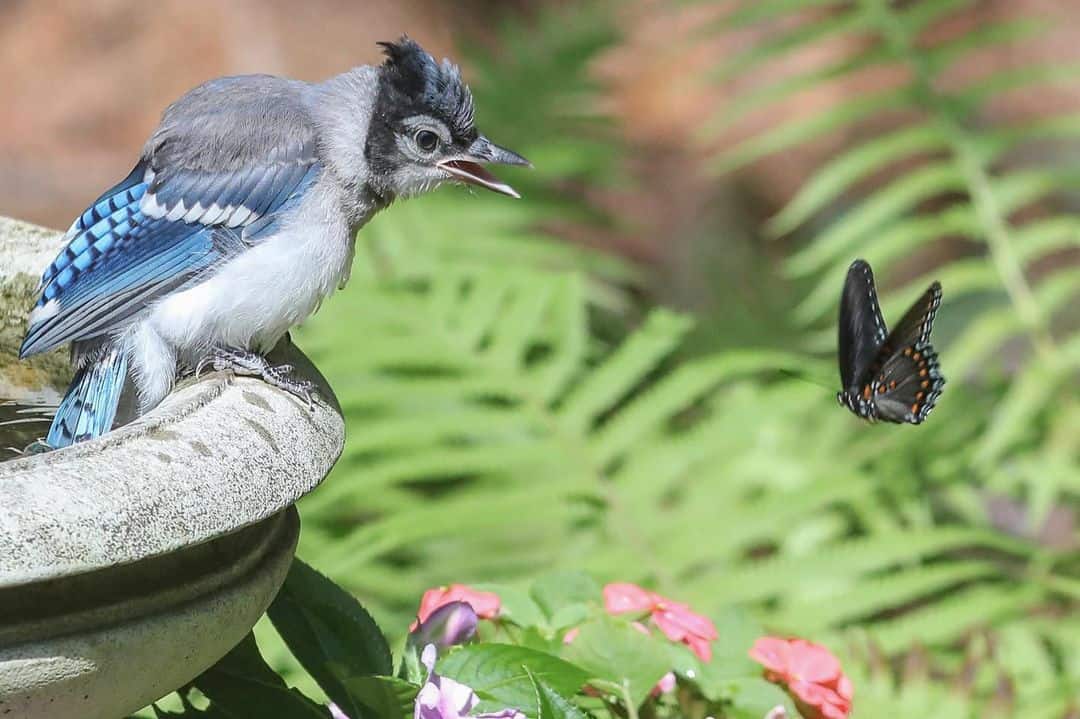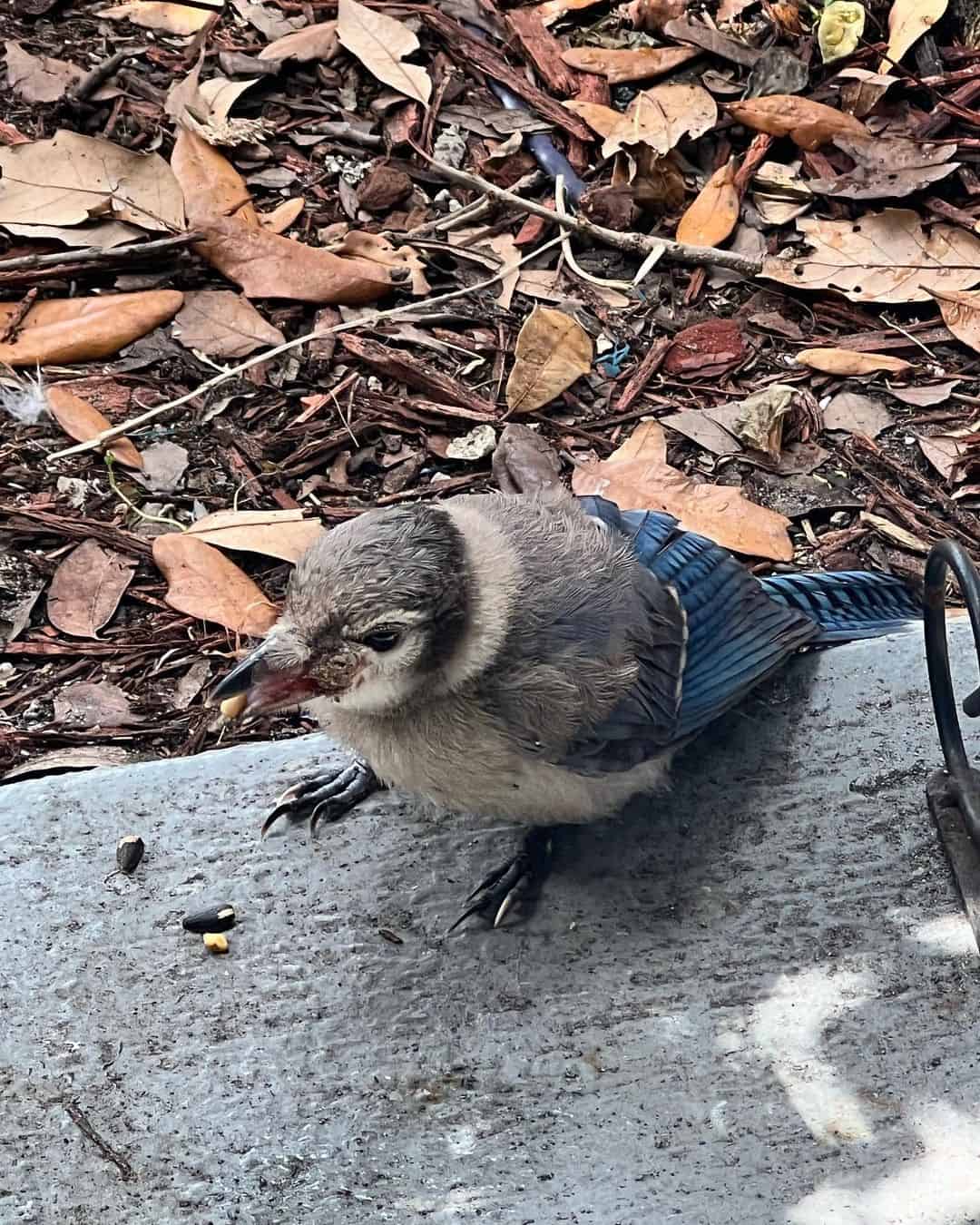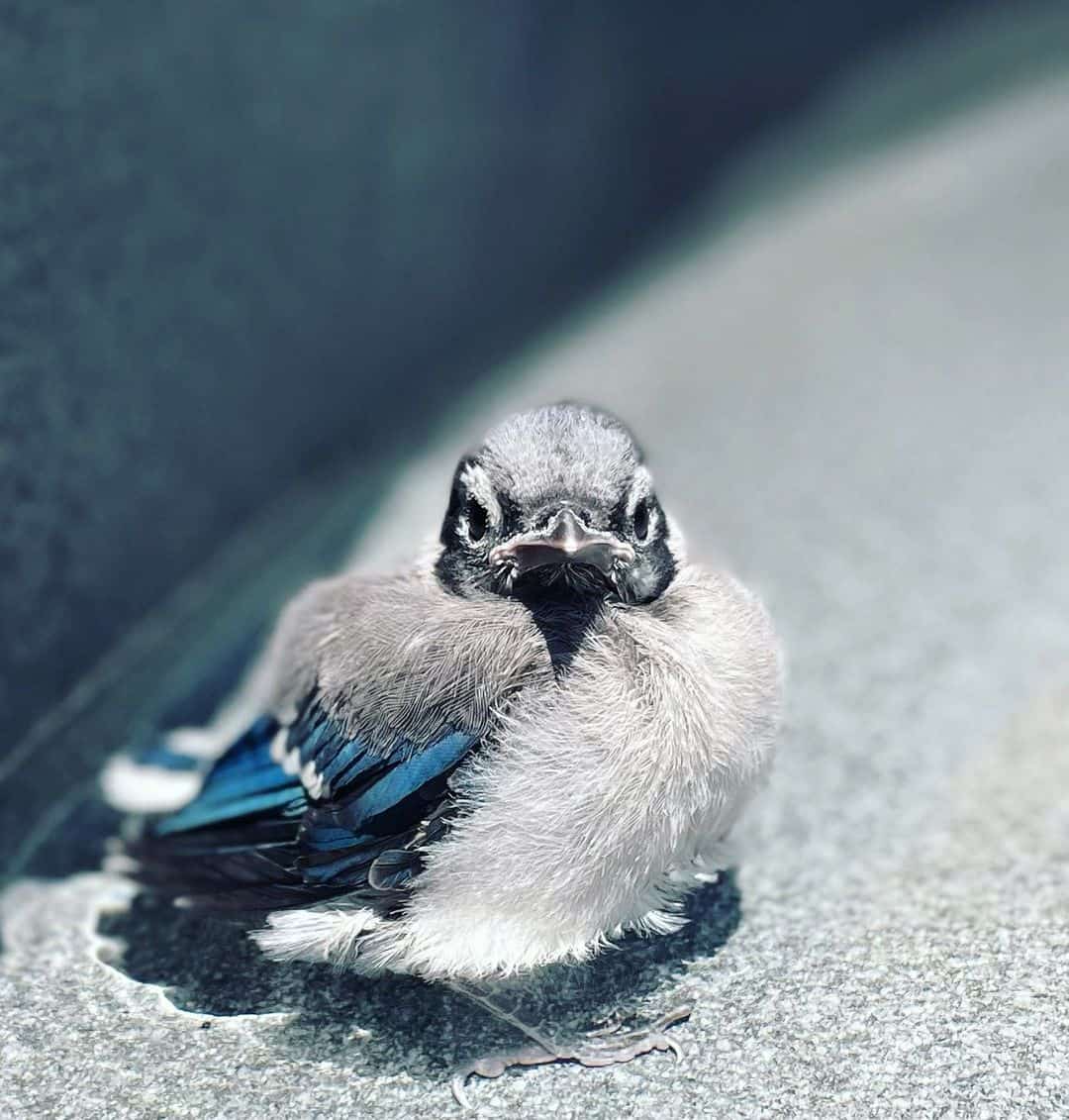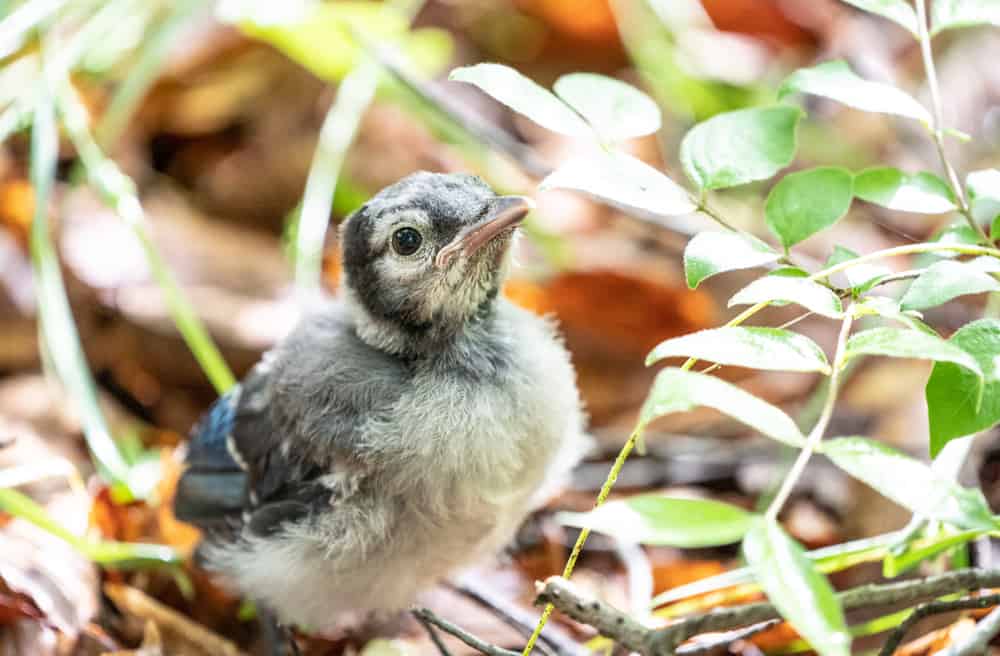Blue jays are eye-catching, cobalt blue songbirds with majestic head crests that roam around North America. They’re quite often found in residential areas, so you’ve probably seen one at least once in your life, whether in your backyard or a nest in oak trees by the park.
It’s fascinating to watch these birds hunt for food in the great outdoors. They pick up all sorts of food to it, from fruits to seeds and even tiny animals to munch on.
But you might find yourself asking—what do baby blue jays eat? Hatchlings can’t just fly out of the nest to find food themselves as adults do, can they? Today, we’ll break it down for you.
How Do Baby Blue Jays Eat?
Baby blue jays rely on their parents to feed them. This isn’t uncommon among baby birds. Most bird species can’t leave the nest for weeks once they’re born, so their parents need to leave them to hunt for food and then bring the food back to feed them.
What typically happens is that the male parent hunts down most of the food for the first couple of days after the blue jay eggs hatch. When more food is needed as the hatchlings get bigger and require more food, the female will eventually go out and hunt for food alongside the male.
It’s usually the mother who feeds her baby blue jays. She does this by regurgitating and carrying food in her beak before reaching into her hatchlings’ mouths to drop the food in.
And it’s the same way with baby blue jays. Basically, they eat whatever their parents bring back for them. Sometimes, the parents will bring food reserved just for their hatchlings, like small berries and grains. Other times, they’ll feed their babies leftovers from their own meals of small animals.
What Type Of Food Are They Fed Un The Wild?

You might be wondering, what do baby blue jays eat if all they do is wait for their parents to bring them home food?
Because baby blue jays depend on their parents for food, they essentially end up eating whatever their parents do too. Here are some of the things blue jays will typically eat and then bring home to their hatchlings waiting in the nest:
1. Fruits and berries
Blue jays will look around trees and shrubs to look for fruits to bring back to their hatchlings. They tend to look for small fruits, such as cherries and grapes—something that can be fed easily to baby blue jays with small beaks.
Among their favorites are berries. They enjoy blackberries, raspberries, huckleberries, elderberries, and more. So if you have any berry bushes in your garden, don’t be surprised if some blue jays come for a visit. They’re likely hunting for food for themselves and their babies.
2. Plants and herbs
Because they’re surrounded by plants and trees, blue jays will also often eat leaves and vegetables from tree branches. If they get the chance, they’ll also collect herbs to bring back to their hatchlings waiting in the nest.
3. Nuts, seeds, and grains
Blue jays are also drawn to nuts and seeds. They like food like peanuts, beechnuts, hazelnuts, and even acorns. When it comes to seeds, sunflower seeds are their favorite. Farmers often find blue jays waiting for them to throw out some of their seeds so they can collect them to bring home.
Of course, a lot of these nuts and seeds are both big and hard. So, the mother bird will usually chew on and soften them before feeding the food to her chicks.
If you want to attract blue jays to your backyard, it would be a smart idea to plant some nut trees, like oak or hazelnut trees.
They also particularly like grains, specifically corn.
4. Small insects
Of course, blue jays and their hatchlings need protein and fats, too. Their main source of those is small insects they find in the wild. These include caterpillars, beetles, crickets, horseflies, grasshoppers, gypsy moths, and arthropods. They’ll also look for worms in the soil.
If the insects are too big for hatchlings to eat, the adult birds will tear the meat apart first and feed them tiny bits and pieces.
5. Other animal meats
Blue jays are known to be omnivores. So aside from just insects, they also feast on small animals such as frogs, fish, mice, and lizards.
They don’t eat these animals as often as those listed above, but they often partake in the extra protein and feed some of the leftovers to the hatchlings.
Obviously, these animals are a bit too big to fit in baby blue jay’s mouths. So, like with insects and bigger nuts, adult blue jays will chew and regurgitate the animal meat before feeding it to the nestlings.
Rescue A Baby Blue Jay

If you find a baby blue jay left alone in their nest, don’t panic or take the hatchlings. Their parents are probably near the area just looking for food for them.
But in the case of an emergency, like finding a hatchling on the ground, look for their nest immediately. If you find it behind a shrub or on a tree, put the baby blue jay back in its home.
If you’re sure that there’s no nest nearby, watch over the hatchling for an hour or so to see if their parents come to find them.
On the off chance that they’re not found by their parents, make a temporary nest for them, whether it’s with straw or an old t-shirt. Then, call a bird rehabber to get help.
Of course, while waiting for the rescue team to get the baby bird, you will need to feed it. You have two options for that:
Commercial pet food
The first way to feed a baby blue jay on your own is by giving them commercially sold blue jay food. You can check with your local pet store or farm supply shop if they have any, but this may be a bit difficult to find. If you do, soften the blue jay food with water before feeding it to the hatchling.
If blue jay food isn’t available in your area, you can moisten some canned dog or cat food and feed it to them with a medicine dropper. Dog or cat food is rich in protein, which is great for growing blue jays. If you want, you can blend in some berries and unprocessed veggies in there, too.
A homemade blend concocted just for them
Of course, it’s always better to feed rescued baby blue jays natural food that they would have gotten from their parents. You can make your own blue jay food from scratch using the fruits and vegetables that you already have in your kitchen.
Choose ingredients from the list above, like raw and unseasoned grains and nuts, fresh berries (never canned), and some corn, with or without the kernels. You can also add other fruits, like apples, as long as you grind them up well in a blender.
Make sure none of the produce you feed the baby blue jay has any preservatives or chemicals. They need to be as raw and organic as possible. Ask yourself, what do baby blue jays eat in the wild? Use this as a guide when picking out what to put in their homemade food blend.
If your blend contains any hard nuts, make sure to soften the blend with some water so that it’s easier for the nestling to eat.
How To Feed A Baby Blue Jay At Home

It can be intimidating feeding a baby bird, especially if it’s your first time. It’s even more challenging if the hatchling is crying loudly. That just means it’s hungry, so don’t be too worried about it.
Another sign that it is time for a hatchling to eat is that they’ll open their beaks really wide.
Here’s what to do if you must feed a baby blue jay yourself, step by step:
- Grind all your chosen ingredients together. You can do this with a food processor or break it down by hand using a mortar and pestle.
- Put the blend in a small bowl. If it’s too hard because of the grains and nuts, add some water to soften the blend. This makes it easier to feed the small hatchlings later.
- Use a medicine or eye dropper and pick up some of the food blend with it.
- Go to the baby bird and slowly drop the food into its open beak. Make sure that you’re not pressing down on the baby bird’s throat.
- Wait until the hatchling swallows the food and opens its beak again to feed them some more.
- Don’t forget to give it some water to drink using the medicine dropper as well.
- Feed the baby blue jay every two hours or until the rehabber comes and gets them.
Conclusion
Much like all baby birds, blue jay hatchlings and fledglings mostly rely on their parents to bring them food from the wild. The selection ranges from fruits and grains to insects and other wild meats.
If you find yourself having to rescue and feed a baby blue jay that’s been separated from its parents, try to feed it something close to what its parents would. Stick with berries, nuts, and grains. Use a medicine dropper to feed them. And most importantly, call a rescue team for the hatchling.
Hopefully, you’ve learned a thing or two about what the offspring of magnificent blue jays eat. If you have any more questions about baby blue jays, feel free to leave it in a comment below.
